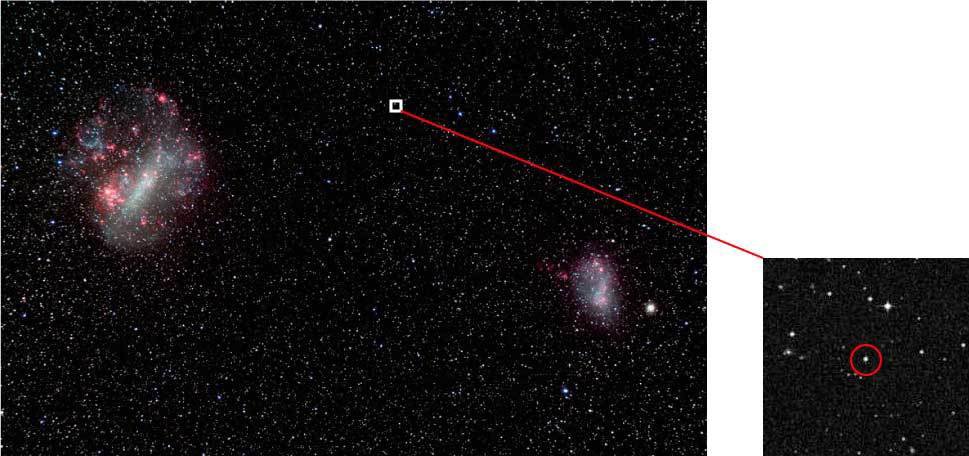Oldest star in the universe found by Aussies

AUSTRALIAN ASTRONOMERS HAVE found the oldest known star, revealing new clues as to what the universe was like in its earliest stages of development, 13.7 billion years ago.
“Stars are like time capsules which lock away a sample of the surrounding gas during formation,” says Dr Stefan Keller, lead researcher behind the discovery at the Australian National University in Canberra.
The first stars, which formed as a result of the Big Bang, were massive (100-1000 times larger than the Sun) and chemically pure – composed only of hydrogen, helium and traces of lithium. These stars burned out quickly, forming and expelling heavier elements.
First stars after the Big Bang
This ‘pollution’ formed successive generations of stars, each with a higher concentration of heavier elements, such as metals, than the last.
The newly discovered star – with the catchy title SMSS J031300.36-670839.3 – has an estimated age between 13.6 and 13.4 billion years old.
This means it is the direct ‘offspring’ of one of the very first stars, and the gas within its core reflects the chemical composition of the universe several hundred million years after the Big Bang.
Though it’s just 6000 light-years from Earth, this ancient star has remained undiscovered until now. However, the instrument used to find it – the ANU SkyMapper telescope at the Siding Spring Observatory in Coonabarabran, NSW – provides more advanced data regarding the metal content of stars than earlier methods based on photographs.

The newly discovered ancient star – SMSS J031300.36-670839.3 – is found in a picturesque part of the southern sky between the Large- and Small Magellanic Clouds, two galaxies that orbit the Milky Way. (CREDIT: Digital Sky Survey/Space Telescope Science Institute)
Telescope targets Southern Hemisphere stars
“Photography is a good basis, but…cannot yield the level of detail that digital methods are able to produce,” Stefan told Australian Geographic. “SkyMapper allows us to filter through large volumes of stars to find ‘best targets’ to study in greater depth.”
SkyMapper is currently involved in the Southern Sky Survey, a five-year project to map and record the age, mass and temperature of celestial objects viewed from the Southern Hemisphere.
The telescope is able to target stars which radiate a wider range of wavelengths of light than is typical – this indicates that they contain less metal and are therefore older. The newly discovered star contains about 60 times less iron than the average.
As this particular star is so long-lived, its discovery shows us that “the epoch of first stars is longer than traditionally thought to be,” Stefan says. Theories of the Big Bang predicted that stars of this kind should still have been in existence, but before now none had been observed, he says.
Holy Grail of astronomy
Australian Geographic’s astronomy columnist Professor Fred Watson says the discovery is “but a step away from the ‘Holy Grail of astronomy’ – which is to find and study the first stars. This requires very large telescopes which allow us to look very far away, and very far back in time.”
Fred – who heads up the Australian Astronomical Observatory at Coonabarabran, but was not involved in the finding – says that until we can do that, we have to instead look for ancient stars which are closer and still burning, as this study has done.
“These findings may cause researchers to revise models of how the first stars were presumed to have formed,” he says.
Still “happily turning hydrogen into helium,”Stefan says, SMSS J031300.36-670839.3 is expected to burn on for another 1.5 billion years or so.
The research was published in the journal Nature.




